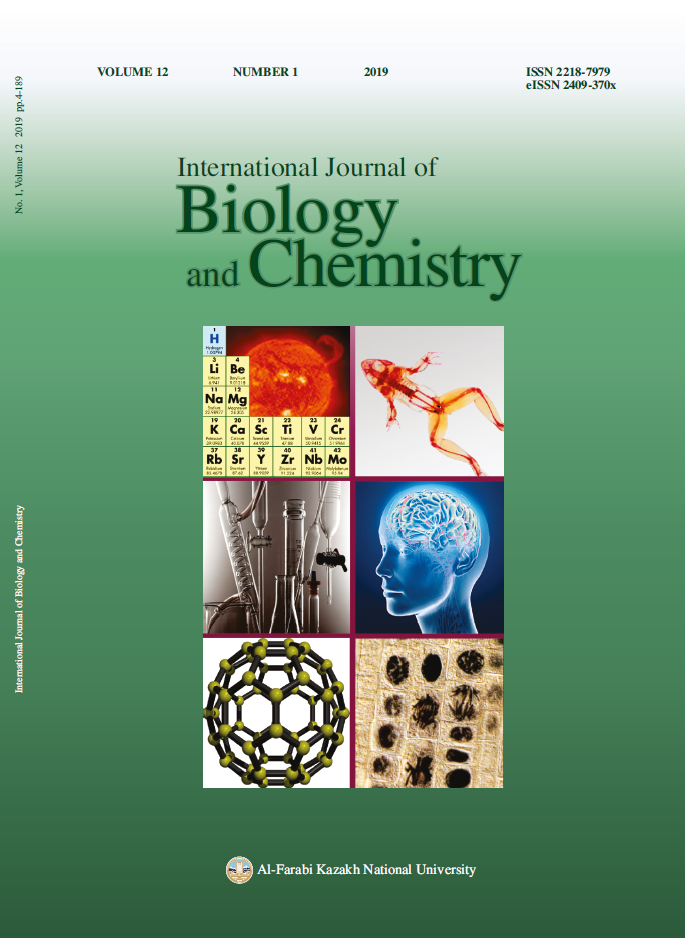Processing of model n-alcanes and diesel fraction on the catalyst La-Zn-Mn / Al2O3 + ZSM
DOI:
https://doi.org/10.26577/ijbch-2019-1-i20Abstract
Catalytic cracking is one of the most common processes in the oil refining industry. It contributes to a significant deepening of the oil refining degree and it is used for the production of high-octane gasolines and diesel fuels from heavy oil fractions, as well as for the production of petrochemical synthesis products.
One of the promising methods for the regulation of catalytic properties is the introduction of modifying additives into the catalytic composition. In this work the catalysts on the base of Al2O3, ZSM catalyst
modified by introduction of additives of manganese, lanthanum and zinc have been prepared and studied
during the hydrogen-free conversion of hexane, tetradecane and the diesel fraction. The structure and state
of the catalyst’s active centers have been studied using a complex of physico-chemical methods (TEM, XPA,
TPD). It has been found that catalysts are characterized by the presence of both acid (Bronsted and Lews)
and M0- or Mn+-metal centers. The structure of acid centers can include MnSiO3, La5Si, Mn15Si26, LaMn2Si2,
La Al11O18, La2Si2O7, La3Si2, La3Si2, functioning as Lews acid sites. The degree of hexane and tetradecane
conversion, the composition of the compound form is determined by the length of the hydrocarbon chain
and the conditions of the process.
Downloads
How to Cite
Issue
Section
License
ааа





